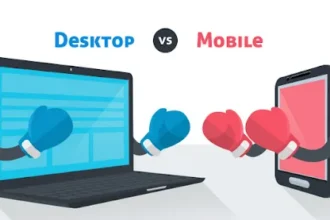Why Interactive Content is the Future of Audience Engagement in 2025
In the rapidly evolving digital landscape of 2025, content consumption has shifted dramatically. Traditional static content, like blog posts and infographics, are no longer enough to captivate today’s audiences. Instead, interactive content is taking center stage as the most effective way to engage users, build relationships, and generate meaningful interactions.
If you’re looking to stay ahead of the curve, understanding why interactive content is the future of audience engagement in 2025 is essential. In this article, we’ll explore the key reasons behind this paradigm shift, the types of interactive content that are gaining popularity, and how you can leverage this trend to boost your marketing strategy.
1. The Evolution of Audience Engagement
Over the past decade, digital marketers have continuously adapted to changing consumer behaviors. The early days of the internet favored static content—blog articles, PDFs, and videos. As time progressed, the rise of social media platforms, mobile devices, and new technologies revolutionized content consumption.
In 2025, audiences seek personalized, immersive, and engaging experiences rather than passive content. They want to participate actively rather than merely absorb information. This shift is driven by several factors:
- Shortened attention spans
- The rise of social media and user-generated content
- The demand for authentic, interactive experiences
- Advancements in technology enabling more dynamic content creation
2. What is Interactive Content?
Interactive content refers to web content that requires active engagement from users. Instead of passively reading or watching, users interact with the content through actions like clicking, swiping, voting, or contributing.
Examples include:
- Quizzes and assessments
- Interactive infographics
- Calculators and configurators
- Polls and surveys
- 360-degree videos and virtual tours
- Interactive videos with clickable elements
- Augmented reality (AR) and virtual reality (VR) experiences
This type of content engages multiple senses, encourages participation, and provides personalized experiences that resonate with users.
3. Why Interactive Content is the Future of Audience Engagement in 2025
A multi-faceted approach to audience interaction makes interactive content a game-changer in 2025. Here’s why:
a. Increased User Engagement and Retention
Studies show that interactive content captures attention more effectively than static content, leading to higher engagement rates. When users participate actively, they’re more likely to remember the message and develop a deeper connection to the brand.
b. Personalization and Data Collection
Interactive content allows brands to collect valuable data directly from users. For example, quizzes and surveys reveal preferences, pain points, and behaviors, enabling personalized marketing strategies that improve conversion rates.
c. Enhanced User Experience (UX)
A seamless, immersive experience keeps users on your website longer. Interactive elements make content more entertaining and accessible, leading to more positive brand perceptions and increased loyalty.
d. Meets Consumer Expectations
Modern audiences, especially Millennials and Gen Z, expect highly engaging and interactive experiences. Static content no longer satisfies their curiosity or desire for participation. Adapting to these expectations is essential to remain competitive.
e. Algorithm Favorability
Platforms like Google, Facebook, and Instagram prioritize engaging, shared content in their algorithms. Interactive content encourages sharing and social interaction, boosting organic reach and visibility.
f. Competitive Advantage
Brands leveraging innovative interactive strategies differentiate themselves from competitors who rely solely on traditional static content.
g. Future-Proofing Marketing Strategies
As technology advances, interactive elements like AR and VR are becoming more accessible. Embracing interactive content now positions brands for future innovations.
4. Benefits of Interactive Content
Embracing interactive content offers numerous advantages:
1. Boosts Conversion Rates
Interactive experiences nurture trust and provide decision-support tools, leading to higher conversions.
2. Improves Data Insights
Engage users and collect real-time data that informs marketing strategies and product development.
3. Strengthens Brand Loyalty
Interactive content creates memorable experiences, fostering emotional connections.
4. Increases Time Spent on Site
Longer engagement reduces bounce rates and improves SEO rankings.
5. Facilitates Viral Sharing
Contests, quizzes, and viral interactive content encourage sharing, expanding reach organically.
6. Supports Multi-Device Accessibility
Responsive interactive content ensures a seamless experience across desktops, tablets, and smartphones.
5. Popular Types of Interactive Content in 2025
As the trend accelerates, certain types of interactive content are gaining popularity:
a. Interactive Quizzes and Assessments
Engage users with fun, educational quizzes that reflect personal preferences or knowledge.
b. Interactive Infographics
Animated, clickable infographics deliver complex data engagingly and understandably.
c. Calculators and Configurators
Tools that help users calculate costs, personalize products, or plan projects (e.g., mortgage calculators, product configurators).
d. Polls and Surveys
Gather instant feedback and foster participation in decision-making processes.
e. Interactive Videos
Videos with clickable elements, hotspots, or branching storylines increase viewer interaction.
f. Augmented & Virtual Reality Experiences
AR apps and VR tours provide immersive, lifelike experiences—ideal for real estate, retail, and education.
g. Gamified Content
Challenges, leaderboards, and rewards motivate continued engagement and brand loyalty.
6. How to Create Engaging Interactive Content
Designing compelling interactive content requires strategic planning and execution:
Step 1: Define Clear Goals
What do you want to achieve? Brand awareness, lead generation, customer education?
Step 2: Understand Your Audience
Know their preferences, behaviors, and pain points.
Step 3: Choose the Right Format
Select interactive formats that resonate with your audience and meet your objectives.
Step 4: Prioritize User Experience
Ensure content is mobile-friendly, fast-loading, and easy to navigate.
Step 5: Incorporate Visual and Audio Elements
Engage multiple senses and make the experience memorable.
Step 6: Use Personalization
Leverage collected data to tailor content to individual users.
Step 7: Integrate Clear Calls-to-Action (CTAs)
Guide users toward desired actions, whether shopping, subscribing, or sharing.
Step 8: Test and Optimize
Regularly analyze performance data, gather user feedback, and refine your content.
7. Challenges and How to Overcome Them
While interactive content offers numerous benefits, it also presents challenges:
a. High Development Costs
Costly to produce compared to static content but can be minimized with templates and scalable tools.
b. Technical Complexity
Require specialized skills—consider partnering with experienced developers and designers.
c. Ensuring Accessibility
Design content that is accessible to users with disabilities; follow WCAG guidelines.
d. Measuring ROI
Use analytics tools to track engagement metrics and conversion rates effectively.
8. Future Trends and Predictions
Looking ahead, interactive content in 2025 and beyond will:
- Integrate AI for personalized experiences
- Utilize 5G for seamless, high-quality AR/VR interactions
- Incorporate more immersive formats like mixed reality
- Use blockchain for interactive loyalty programs and authentic digital experiences
- Leverage data privacy advancements to build trust in personalized content
Have you read this: 3 Irresistible Keys for Nigerian Video Marketing?
Final Thoughts
Why interactive content is the future of audience engagement in 2025 is clear: it combines technological innovation with human psychology to create memorable, personalized, and impactful experiences. As consumers seek more meaningful interactions, brands that prioritize interactive strategies will build stronger relationships, foster loyalty, and stand out in competitive markets.
Now is the time to integrate interactive content into your marketing mix. Start small—test different formats, analyze results, and scale your successes. The future of engagement is hands-on, immersive, and interactive.
Ready to embrace interactive content? Contact us today to learn how we can help you craft engaging, innovative experiences that captivate your audience in 2025 and beyond.




